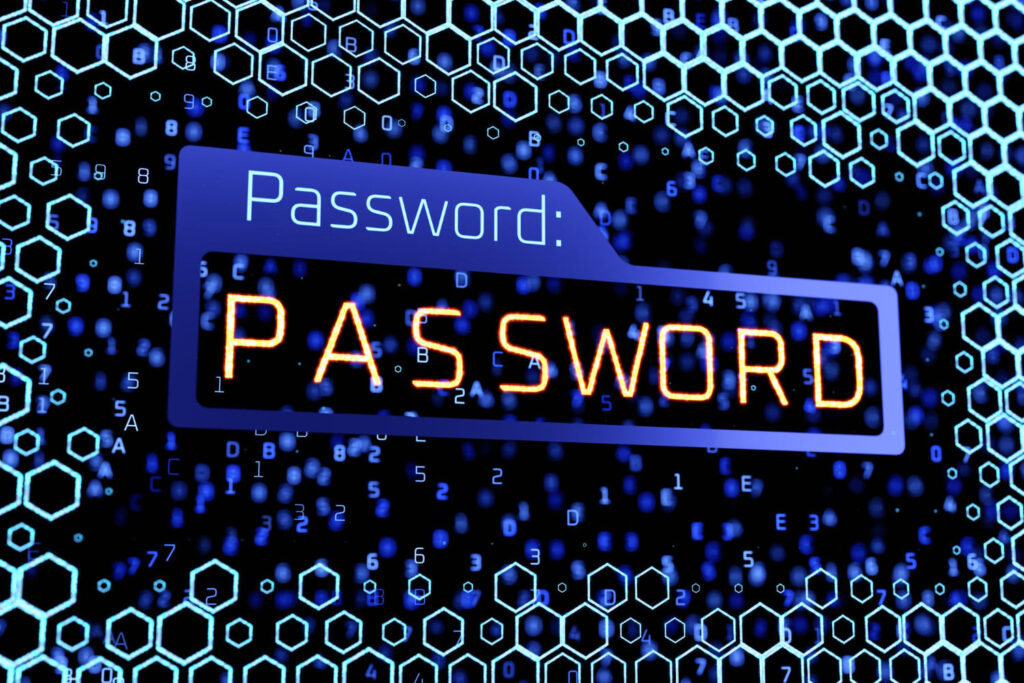Passwords are essential for securing confidential digital data. However, there are lifelong enemies for any data: hackers. Before, it was a common fact that hackers typically use a password cracker for ill purposes, but it’s not the only purpose these days.
Nowadays, password cracking is a deceptively simple yet powerful tool for many individuals and organizations. Besides ill purposes, this method also helps restore passwords to access important digital data.
Ahead, we aim to demystify this tool, shedding light on how it works, the different attack methods, and password-cracking tools on the market. So, let’s dive into the world of password crackers and unravel the mysteries behind these digital lock picks!
What is Password Cracking?

Password cracking—or password hacking—is the process of unlocking or deciphering a password from its secured form, often used by crackers or hackers to gain unauthorized access to systems.
At the core of this process is the “password hash,” a cryptographic representation of a password. When you craft a password, it’s transformed into a hash version using a key derivation function (KDF), making it difficult to reverse-engineer.
Crackers use diverse methods like brute force, dictionary attacks, or credential stuffing to guess passwords. They compare these guesses against the password hash until a match is found.
This practice highlights the importance of strong, complex passwords and advanced hashing algorithms to enhance data security and resist such attacks.
Common Password Attack Methods

There are several password attack methods used by crackers—or hackers. Here are some of the most common ones:
Random Guesses
Random guesses are another common method involving a password cracker trying numerous combinations of characters in the hope of hitting the right password. This approach often targets weak, predictable passwords.
According to a NordPass study, 83% of the world’s most frequent passwords can be broken in under a second. For instance, passwords like “guest”, “passw0rd”, “qwerty”, and “123456” are among the most commonly used across all variants and hence, the most vulnerable to such attacks.
When an account holder reuses passwords across different accounts, the risk level of this attack increases.
Brute Force
A brute force attack utilizes programmed software to generate guesses to determine all possible password combinations, login credentials, and encryption keys. There are several types of brute force attacks, including:
- Simple brute force attacks
- Dictionary attacks
- Hybrid brute force attacks
- Reverse brute force attacks
- Credential stuffing
This method is essentially an excessive trial-and-error process that systematically checks all possible combinations of characters until the correct one is found. Typically, passwords that are short in complexity and length can be cracked in mere seconds.
As password strength increases, the time and computational power required to perform a successful brute force attack increase exponentially, making these attacks less feasible against well-secured accounts.
Credential Stuffing
Credential stuffing, one of the types of brute force attacks, concerns a password cracker leveraging stolen account credentials (usernames, passwords, and email addresses) from prior data breaches to get unauthorized access to user accounts across several sites.
This approach exploits the prevalent practice of reusing passwords across multiple websites. Usually, attackers utilize automated tools to test these stolen credentials rapidly against numerous websites and services.
According to the Verizon Data Breach Investigations Report for 2023, 49% of external actor intrusions involved using stolen credentials, highlighting the widespread impact of credential stuffing.
Dictionary Attacks
Another type of brute force attack is the dictionary attack, where a password cracker use a list of common words, phrases, and numbers instead of random combinations.
This method is based on the tendency of many users to choose ordinary words as passwords, such as “sunshine”, “football”, or simple phrases like “letmein.” Despite being user-friendly, these kinds of passwords are highly vulnerable.
Attackers can compile extensive lists of these common words and phrases, including variations with numbers or symbols (like “sunshine123” or “f00tball!”). Region variations are also possible, including city names in the passwords based on the target’s location.
The attack is more efficient than brute force methods, as it targets likely options first, exploiting the habit of using simple, guessable passwords.
Password Spraying
Password spraying is a credential-based attack method where attackers use common passwords across many accounts, bypassing account lockout policies triggered by multiple failed attempts on a single account.
This approach is effective against accounts with generic passwords like “Password1” or “Summer2023”.
Password Cracking Tools
Let’s explore some of the most commonly used tools in password cracking!
Medusa

Linux users can utilize Medusa to perform password cracking. This speedy, lightweight brute forcer aims to support as many protocols that allow remote authentication as possible. With its current 21 modules, each exists as an independent .mod file; no core application modifications are needed to extend the list of supported brute-forcing services.
Cain and Abel

Windows users can use Cain and Abel, a simple password recovery tool maintained by Massimiliano Montoro and Sean Babcock and is provided by people with ethical intentions. It uses network sniffing, dictionary attacks, brute force attacks, cryptanalysis attacks, decoding scrambled passwords, calculating hashes, and many more.
John The Ripper

John The Ripper allows many operating systems to run its password-cracking program. This tool exists as an Open Source password security auditing and password recovery supporting many hash and cipher types, including:
- MacOS
- Windows
- Unix
- WordPress
- Groupware
- Database servers
Besides, it is also available for network traffic captures, encrypted private keys, filesystems and disks, archives, document files, and many more.
What makes it stand out is its ability to autodetect common format encryptions. On top of that, this tool is also dictionary-based, meaning it compares the hash with a dictionary of popular passwords.
You can either use the free or the paid Pro version of John The Ripper.
Ophcrack

Ophcrack is another password-cracking tool option for Windows users, working primarily based on rainbow tables. Its prominent features include audit mode, CSV export, crack LM and NTLM hashes, LiveCD, real-time graphs to analyze the passwords, brute-force module for simple passwords, and many more. The best part? It’s free!
iMobie AnyUnlock

AnyUnlock is a password-cracking software available for iPhone, Mac, and even Windows. It covers complete service to unlock iPhone passcode, MDM Lock, iCloud Activation Lock, Apple ID, iTunes backup password, SIM Lock, and Screen Time passcode.
This is a beginner-friendly tool as it removes passcodes within only three simple steps.
Frequently Asked Questions
Can password crackers bypass encryption, or do they operate through other means?
Password crackers don’t bypass encryption; instead, they attempt to decrypt or guess the password that, when encrypted, matches the target’s encrypted data.
What are the potential consequences of a successful password-cracking attempt?
A successful password-cracking attempt can lead to unauthorized access to sensitive data, identity theft, financial loss, and compromised security of the affected system or network.
Do strong and complex passwords provide immunity against all types of password crackers?
Strong and complex passwords significantly increase security but do not provide absolute immunity against all types of password crackers, especially with advanced cracking techniques and sufficient time.
Conclusion
In wrapping up our exploration of password cracking, we’ve seen that it serves both harmful and beneficial purposes, from malicious attacks to helping regain access to important data. We’ve delved into various methods like brute force, dictionary attacks, and credential stuffing, each with its effectiveness. On top of that, there are myriad tools for password cracking.
If you need assistance with safe data management to avoid a password cracker, contact Fluxgate today!
